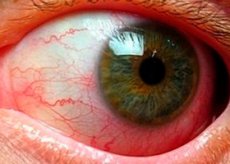Medical expert of the article
New publications
Retinal angiopathy during pregnancy
Last reviewed: 08.07.2025

All iLive content is medically reviewed or fact checked to ensure as much factual accuracy as possible.
We have strict sourcing guidelines and only link to reputable media sites, academic research institutions and, whenever possible, medically peer reviewed studies. Note that the numbers in parentheses ([1], [2], etc.) are clickable links to these studies.
If you feel that any of our content is inaccurate, out-of-date, or otherwise questionable, please select it and press Ctrl + Enter.

Retinal angiopathy during pregnancy occurs in expectant mothers both initially, during the first pregnancy, and again, during subsequent pregnancy expectations. It is important to know that the disease has a hypertensive type and appears no earlier than the sixth month of pregnancy. Almost all registered cases of the disease occur in women in the ninth month of pregnancy.
Most often, the disease is caused by existing toxicosis, as a complication of this condition. Although hypertensive patients risk getting vascular complications much more often and in more severe manifestations than with toxicosis.
So, with this disease, the following changes occur in the retina of a pregnant woman:
- the arteries narrow, and in a variable manner,
- the veins expand and twist,
- sclerosis occurs, which affects the retinal vessels, and in an atypical form,
- Sometimes, but very rarely, there may be cases in which the lumen of the vessels is obstructed.
After childbirth, these symptoms almost always disappear without a trace, just as in cases of toxicosis therapy.
During pregnancy, all medications are contraindicated, so treatment involves the use of gentle physiotherapy methods. And only in exceptional cases, when the condition of the blood vessels in the eyes of a pregnant woman can affect the safety of her vision, drugs that improve blood circulation in the eyeballs can be prescribed.
Retinal angiopathy and childbirth
During a natural resolution of pregnancy, problems with the eyes may arise in women who have been diagnosed with angiopathy. Under the stress experienced by the woman in labor, the retinal vessels may burst, which will inevitably cause partial or complete loss of vision.
Therefore, retinal angiopathy during childbirth is an indication for a cesarean section, which will save the woman's blood vessels, completely eliminating the strain on the eyes. The indication for this operation is the conclusion of an ophthalmologist, who will determine the degree of risk for a woman in natural childbirth.
This disease indicates that the vessels are not in order not only in the fundus, but also in the entire body. After childbirth, it is imperative to monitor the dynamics of the disease progression or the improvement of the condition. This can be done by regularly visiting an ophthalmologist and following all his recommendations for improving the condition of the eye vessels.
It should be noted that in many women, the symptoms of angiopathy disappear immediately after childbirth or very shortly after this event. If this does not happen, the ophthalmologist will definitely prescribe a course of therapy. It is important to know that the lactation period is a contraindication to taking many medications. Therefore, the choice of drugs for treatment should be as natural and gentle as possible, and more intensive therapy can be taken after the baby has time to wean.
Where does it hurt?
What do need to examine?
How to examine?
Who to contact?


 [
[